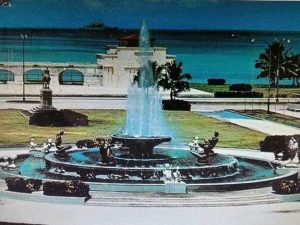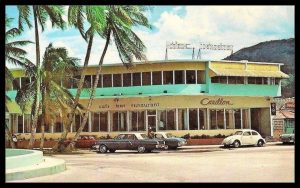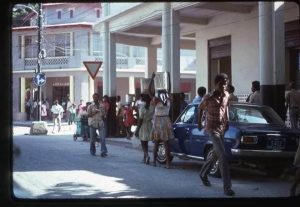Celebrating Black History Month: Celebrating Haitian History
In honor, celebration, and recognition of Black History Month, we want to highlight and celebrate key moments in Haiti’s history. Despite what many think or know of Haiti, this country has rightfully earned its nickname: the Pearl of the Antilles! Haiti is so much more than the brief glimpses shown on T.V. or in the news. And while we should not forget the struggles, hardships, and tragedies of the past and those that continue to this day, we MUST also celebrate the MANY victories Haiti has achieved! Without the combination of both one is unable to see what turns this grain of sand into a pearl. For all events combined have shaped this mountain nation!


The Home of the Taíno People
The island of Hispaniola was home to the Taíno people-a subgroup of the Arawak people. In the late 1490’s Christopher Columbus claimed the island for Spain’s use. The Taíno people were exploited for gold, sugar, and the island’s abundant agricultural resources. According to Smithsonian Magazine, it is estimated that the Taíno population may have been over three million just on Hispanola (Haiti and the Dominican Republic) prior to the claim of the land by Spain. It was within no more than 25 years of Columbus’ arrival, almost all of the Taíno people had died from disease, massacre, or had been enslaved. Because of the drastic decline, the Spanish colony brought African slaves for work. It was believed Africans would “be more capable of performing physical labor” (AAREG). The island and slaves continued to be exploited for Spain’s benefit. Slaves would die in large numbers due to harsh working conditions, starvation, and disease brought by European colonists.
The French Colony of Saint-Domingue
French takeover of the island started in the mid-1600s and the island was officially recognized as a French colony in 1665 and by 1697, Spain had officially ceded the western third of the island to France, and Saint Domingue was established. Quickly overshadowing their neighbor to the east, the French colony grew in wealth and population on the backs of slaves as sugar and other exports were in high demand. This abundance in resources and the demand for its exports earned Haiti the nickname, the Pearl of the Antilles. Labor was cheap at the hands of the slaves, therefore, prices could be maximized to increase the wealth of the plantation owners and French businessmen. But tensions were high and small revolutions were becoming more and more popular.

Revolution and Independence
In the early 1790s, inspired by the French Revolution and led by former slave Toussaint L’Overture, the Haitian Revolution was underway. By 1792, the slaves controlled about a third of the island–holding their ground as reinforcements from France and then later from the British, but both were unsuccessful in their attempts to regain control.
In 1801, L’Overture and the revolution had expanded and conquered the Spanish colony of Santo Domingo–which is now called the Dominican Republic. L’Overture abolished slavery on the island of Hispaniola and asseverated himself as Governor-General. In an effort to reestablish control and reinstate slavery, Napoleon Bonaparte, dispatched 43,000 troops to capture L’Overture that same year. L’Overture was captured and taken to France where he died in custody of the French a couple years later.
L’Overture’s leadership, inspiration, and movement did not end there. Jean-Jaques Dessalines, a general of L’Overture’s, as well as a former slave, continued the fight. He led the revolutionaries in the Battle of Vertieres, defeating Napoleon’s troops and the French in November of 1803. Dessalines declared freedom of the nation on January 1, 1804, renaming it Haiti or Ayiti–land of the high mountains.



The World’s First Black Republic: A Hefty Price to Pay
Haiti became the first black republic in the world, the second nation to gain independence from a European power, and the first nation to abolish slavery. Haiti and her people became an inspiration to slaves in the United States, and at the same time, a threat to pro-slavery governemt officials and slave owners. Because of Haiti’s inspiring fight for freedom and independence, Thomas Jefferson and his administration worked to isolate and strangle Haiti economically in hopes to prevent word from spreading to slaves in the United States. The United States and European powers refused to recognize Haiti as an independent nation for decades after they abolished slavery:
“The Haitian Revolution created the second independent country in the Americas after the United States became independent in 1783. U.S. political leaders, many of them slaveowners, reacted to the emergence of Haiti as a state borne out of a slave revolt with ambivalence, at times providing aid to put down the revolt, and, later in the revolution, providing support to Toussaint L’Ouverture’s forces. Due to these shifts in policy and domestic concerns, the United States would not officially recognize Haitian independence until 1862” (Office of The Historian).
France demanded Haiti pay for its gaining its independence by paying compensation to the slaveholders for their “loss of property” (AAREG). This demand, according to the Equal Justice Initiative (https://eji.org/news/haitis-forced-payments-to-enslavers-cost-economy-21-billion-the-new-york-times-found/) and New York Times, would take Haiti decades (64 years) to pay $560 million (some say more) to France, ultimately costing Haiti’s economy an estimated $21 billion per their calculations.
Haiti’s Historical Contributions
Haiti has had countless contributions to the world’s history. To list just a few:
- Haitians fought during the U.S. Independence War in Savannah, GA. Henri Christophe, the King of Haiti’s Northern Region, was part of the battalion that fought there.
- Alexandre Petion, President of Haiti, provided ships, soldiers, money and arms to support Simon Bolivar’s efforts to obtain the independence of South American countries.
- Haiti supported countries like Greece and Jamaica and took a stand against Nazi Germany by issuing life-saving visas to Jewish refugees during WWII.
- Jean Baptiste Point de Sable was one of the first permanent residents of Chicago, Illinois and was appointed as the founder of Chicago in the late 1770s. The son of a Haitian father and an African-born slave mother, du Sable was summoned by the British to represent their trading interests with the Indians in Detroit. In 1784, Du Sable returned to Chicago, creating several buildings and infrastructure that steadily flourished into a major trading center.
- In 1787, Pierre Toussaint, was transported to New York City by his slave owners. Then in 1807 gained his freedom. Toussaint is acknowledged and respected as one of the leading black New Yorkers of his time. Toussaint went on to become a philanthropist, and established an orphanage for refugees and offered them employment opportunities. Toussaint helped to fund the St. Patrick’s Old Cathedral, in New York City. Toussaint was acknowledged as venerable by Pope John Paul II and is highly regarded by the Roman Catholic Archdiocese of New York.Even though Haiti has been plagued with natural and man-made disasters throughout history and into present day, it holds true to its nickname, the Pearl of the Antilles! The richness of Haiti’s culture, the once highly sought after natural resources, the positioning of the country, the music, art, the beauty and resilience of the people throughout years of turmoil. We invite you to learn more, to eagerly seek knowledge about the country of Haiti, the true beauty, the unique pearl it is, and the history that shaped it into what it is today.
Jean Baptiste Point de Sable Pierre Toussaint 
Click HERE to see all the sources used in this blog.








